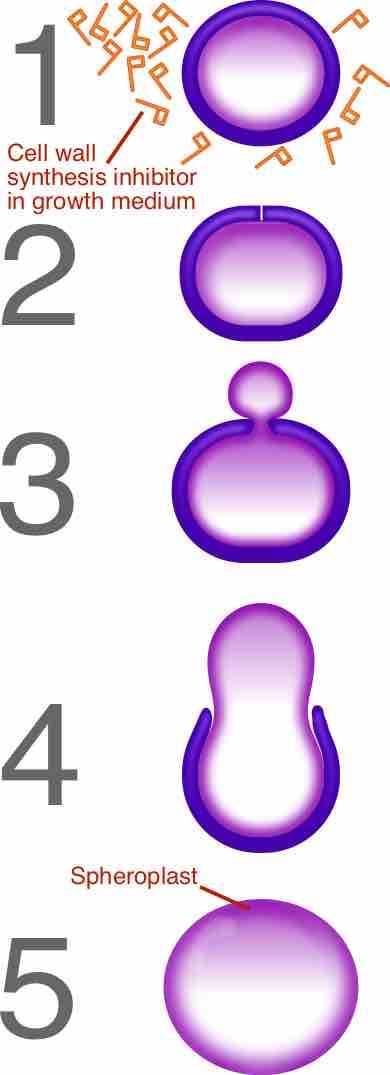Inhibiting Cell Wall Synthesis

Penicillin spheroplast generation
Diagram depicting the failure of bacterial cell division in the presence of a cell wall synthesis inhibitor (e.g. penicillin, vancomycin).1- Penicillin (or other cell wall synthesis inhibitor) is added to the growth medium with a dividing bacterium.2- The cell begins to grow, but is unable to synthesize new cell wall to accommodate the expanding cell.3- As cellular growth continues, cytoplasm covered by plasma membrane begins to squeeze out through the gap(s) in the cell wall.4- Cell wall integrity is further violated. The cell continues to increase in size, but is unable to "pinch off" the extra cytoplasmic material into two daughter cells because the formation of a division furrow depends on the ability to synthesize new cell wall.5- The cell wall is shed entirely, forming a spheroplast, which is extremely vulnerable relative to the original cell. The loss of the cell wall also causes the cell to lose control over its shape, so even if the original bacterium were rod-shaped, the sphereoplast is generally spherical. Finally, the fact that the cell has now doubled much of its genetic and metabolic material further disrupts homeostasis, which usually leads to the cell's death.
Source
Boundless vets and curates high-quality, openly licensed content from around the Internet. This particular resource used the following sources: